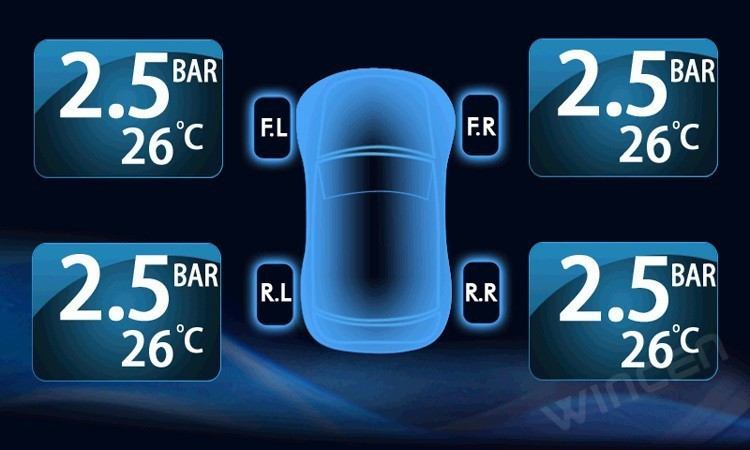
TPMS
What is TPMS?
TPMS (Tyre Pressure Monitoring Systems) is the commonly used term for Tyre pressure systems.They are electronic systems that keep track of the (realtime) pressure in a tyre and give a signal to the driver when there is something wrong . Car factories are allowed to make use of 2 different systems: The direct system (that works with a pressure sensor inside the wheels) and the indirect system (that works via the ABS system of the car).
TPMS fulfills these functions :
- Increase safety
- Decrease the carbonmonoxide pollution
- Decrease fuel usage
- optimalise the lifespan of a tire
- Increase the durability of tires

What legal requirements must TPMS fulfill?
Starting from 1 November, the tires of new cars sod by the manufacturer have to be equipped with TPMS systems. Both direct and indirect systems are allowed, As long as they meet the requirements and conditions of the European directive ECE-R64. This guideluine describes the functionality of the system, it does not matter here wether you are using a direct or indirect system. TPMS is a part of the clearancetype of the car which makes it a mandatory part of the vehicle. As a driver, you need to take TPMS into consideration when purchasing new rims.
What are the differences between indirect and direct systems?
A direct system measures the tire pressure via a sensour applied inside the wheel. This information is sent wireless to a ruling-unit inside the car. Depending on the type of display the manufacturer placed in the car as a driver you will receive the exact tire pressure of each individual tire, or just a warning as soon as something goes wrong with 1 of the tires. The direct systems are very precise because they accurately measure tire pressure for each wheel, and also work when the vehicleis standing still (unlike indirect systems).
How does an indirect TPMS system work?
In an indirect system, the ABS ASR sensors measure the speed of rotation of the individual wheels. In case of tire pressure loss, the specific wheel turns faster and the TPMS gives a signal. In addition, tire-related vibrations in the wheel are measured too by an advanced signal processing system. A change is seen as an additional indication of pressure loss.